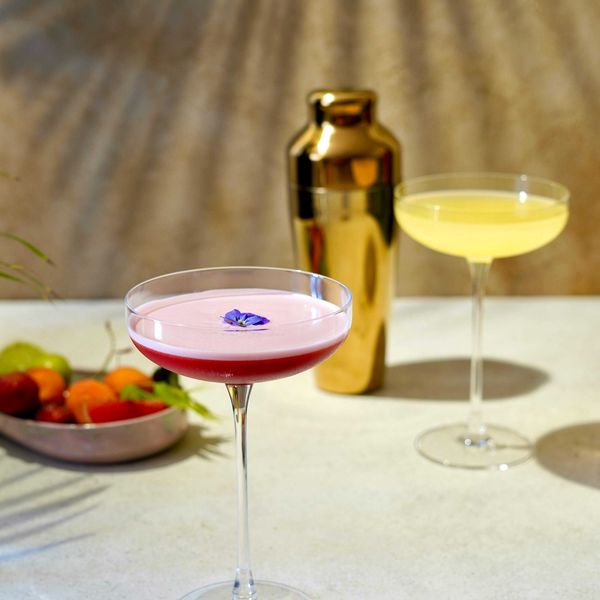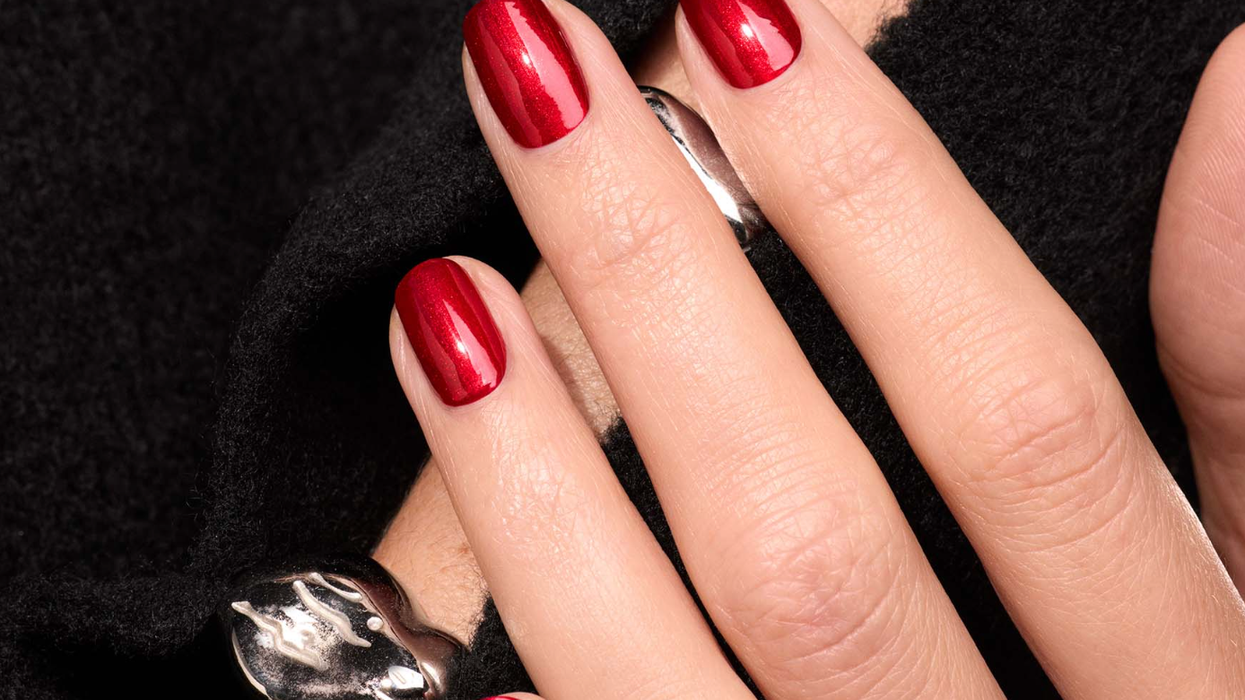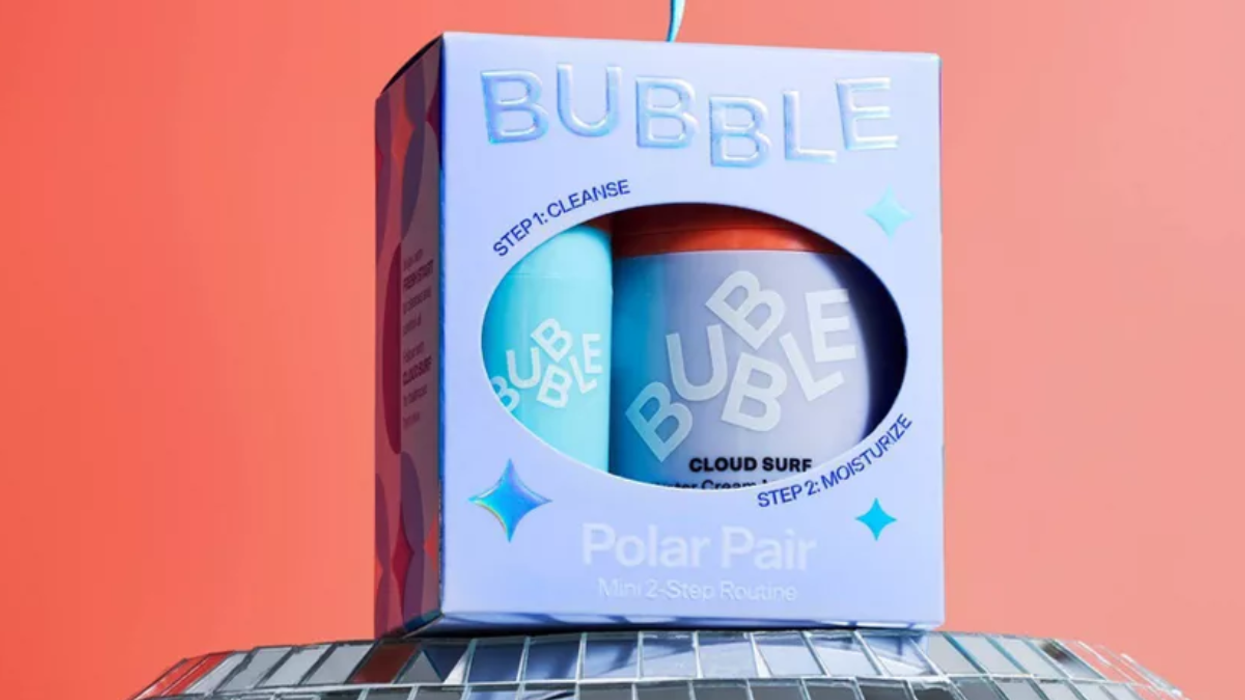Learn these mixology basics, make outstanding cocktails.
The Mixology Starter Kit: Everything You Need to Get Serious About the Art of Cocktails
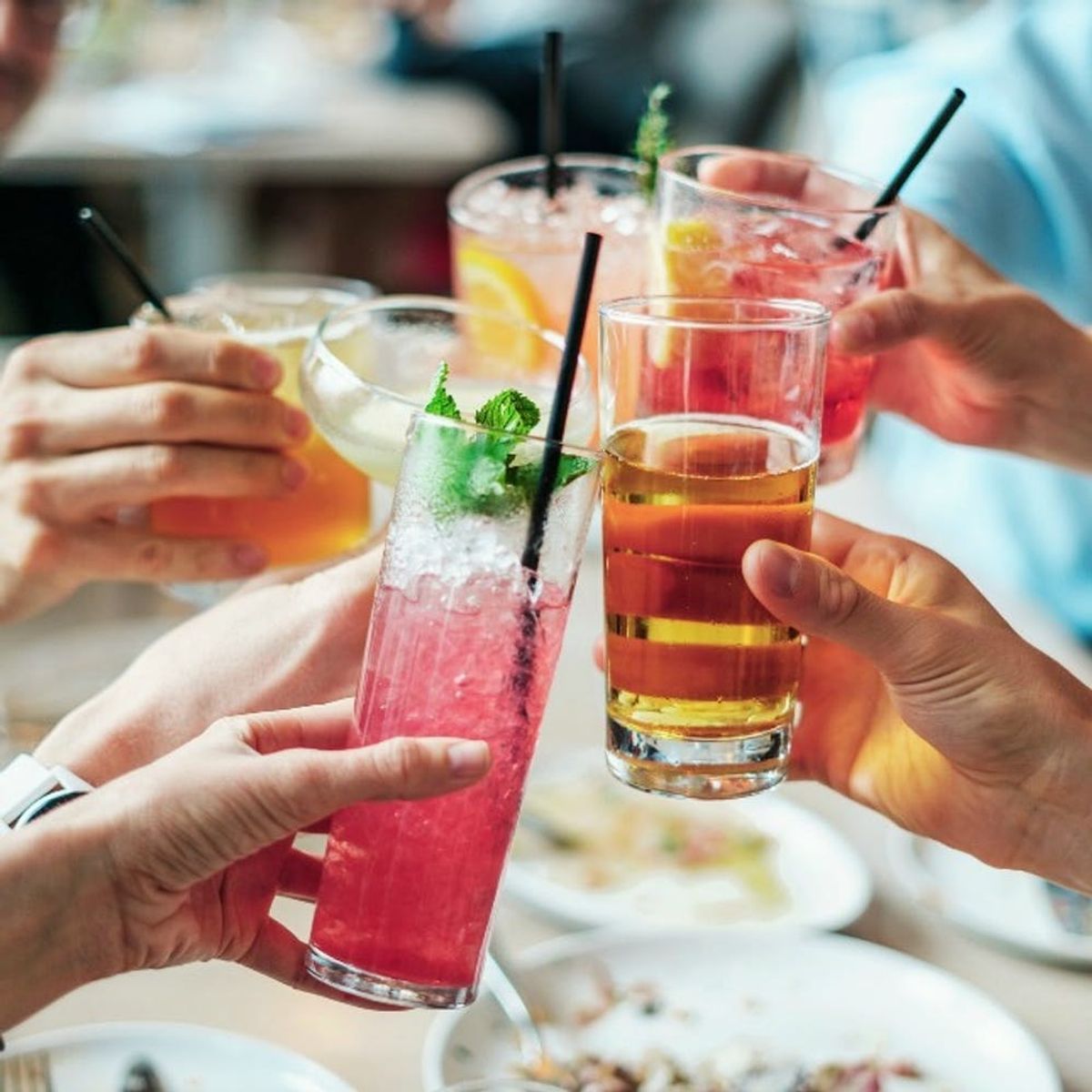
Imagine if, after a long day, you could sit back with a perfectly balanced old fashioned, sidecar, or creation of your own making that doesn’t involve just spirits and juice (we’re looking at you, vodka cranberry). When you make yourself a balanced, nuanced drink, even if it’s an easy cocktail, you’re treating yourself to a sensory experience. But in order to make a beverage that isn’t just white rum and Sprite (admit it, we’ve all been there), you have to delve into the world of mixology.
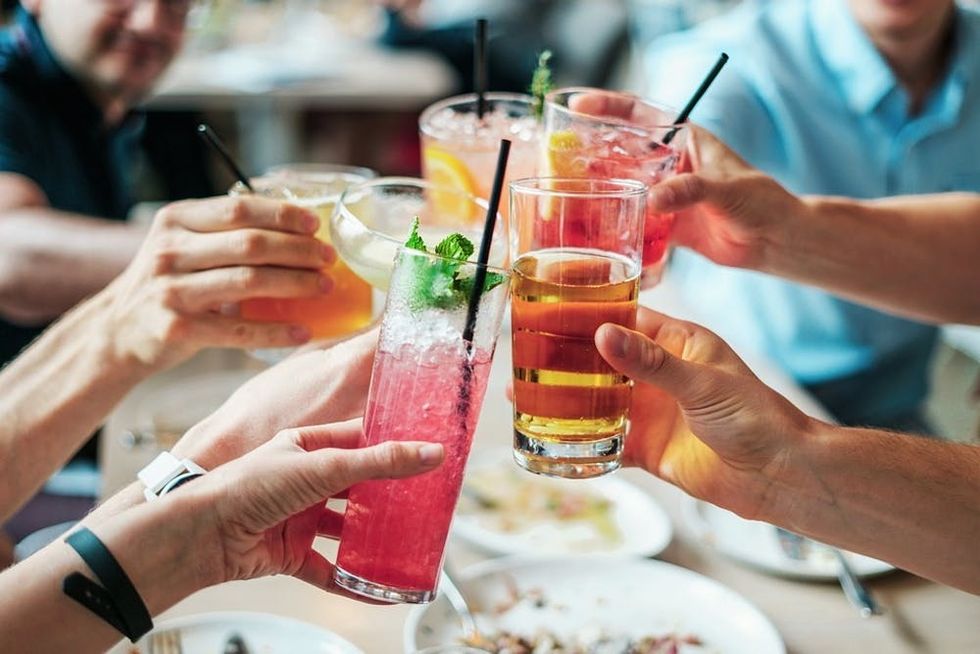
Essential Supplies
There are a few basic supplies you’ll need to stock your bar cart with if you want to get serious about mixology. The good news is you probably already have a few of them.
Bar Equipment You Need: A jigger (for measuring), a bar spoon (for stirring), a cocktail shaker (either a Boston tin or a cobbler shaker, whichever feels best to you), a citrus juicer, a citrus peeler or channel knife, a muddler, a bottle opener, a corkscrew, and a Hawthorne strainer.
Cocktail Recipe Book: You’ll need a recipe book to help you get started, preferably one that covers technique, history, and recipes. We like The Joy of Mixology by Gary Regan. You can also try using a mixology or cocktail app, but be wary — some of the recipes on these apps and online are user-generated, and might not have the same high-quality results you can get with a classic book.
Essential Ingredients
The art of cocktail making does require a few special ingredients. But once you take the first sip of your hand-crafted drink, you’ll realize stocking up was totally worth it.
Spirits: You don’t have to get everything, but you should have the basics. If you’re on a budget, start with the ingredients to your favorite drink and build from there. You need: vodka, gin, bourbon, rum, blended whiskey, and tequila.
Bitters: There are two types of bitters you absolutely should have: Angostura and Peychaud’s. If you have more room in the budget, grab a bottle of orange bitters too.
Liqueurs: The world of liqueurs is too numerous to fully explore, but here are some common bottles you should start with: sweet and dry vermouth, orange liqueur, cream liqueur, coffee liqueur, Campari, amaretto, and elderflower liqueur.
Fresh Ingredients and Add-ins: Perishable ingredients are what can really make your drinks pop (put away the pre-squeezed lemon juice — yes, you can tell the difference). You should have on hand: fresh lemons, limes, and oranges; fresh mint; simple syrup; sour mix (preferably homemade); sugar; maraschino cherries (high-quality, like Luxardo); grenadine; coarse salt.
Mixers: You’ll want a fairly large selection, but let’s start with the basics: tonic water and club soda. From there, depending on what your favorite cocktails are, consider stocking your bar with cranberry juice, orange juice, ginger beer, ginger ale, cola, lemon-lime soda, and more.
The Great Debate: To Stir Or to Shake?
Thanks to James Bond, it seems like a lot of us are under the impression that every cocktail should be shaken, not stirred. But there’s actually a big difference between the two, and they’re used to prep different types of drinks.
When to Shake: You should shake cocktails that need to have their flavors melded. This is usually when you add non-spirit items to a drink, like citrus juice, egg whites, simple syrup, cream, and sometimes herbs.
When to Stir: You should stir spirits-forward drinks, like classic martinis, Manhattans, and old fashioneds. This chills them without diluting them too much, which can take away from the overall flavor and texture of the cocktail.
Recipes to Master
Practice these classic cocktails over and over again. Once you’ve mastered them, you can start experimenting. Basil julep, anyone?
- Old Fashioned
- Manhattan
- Martini
- Daiquiri
- Margarita
- Sidecar
- Whiskey Sour
- Mint Julep
- Negroni
Your next step? Invite friends over to taste some of your masterful concoctions!
For more cocktail inspiration and culinary know-how, follow us on Pinterest.
(Photo via Bridgesward/Pixabay)


